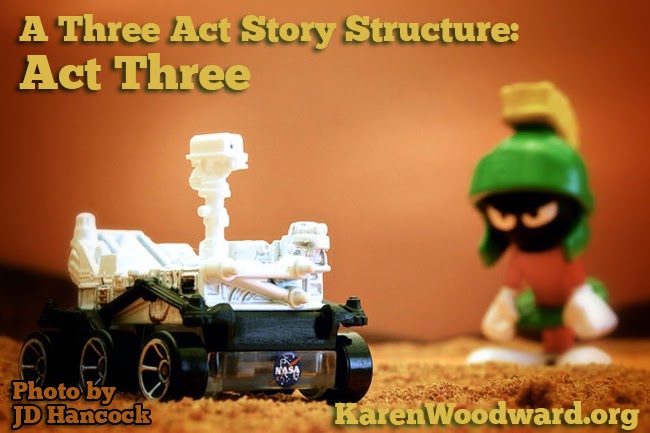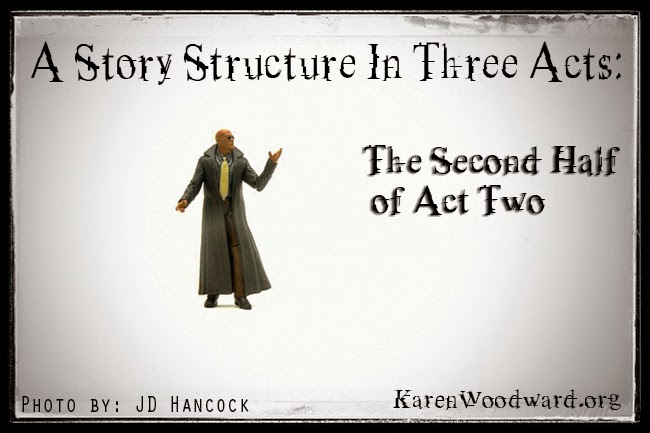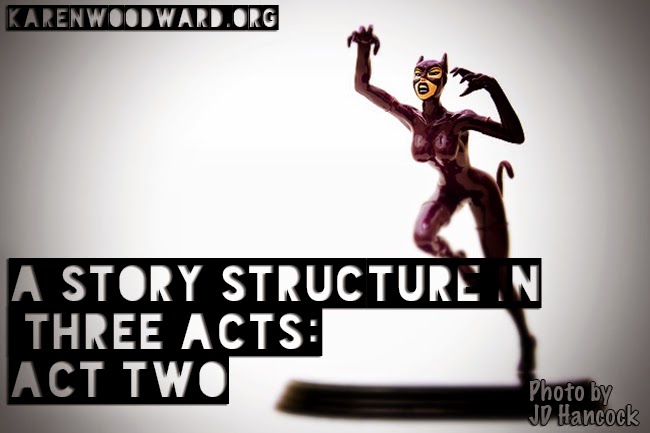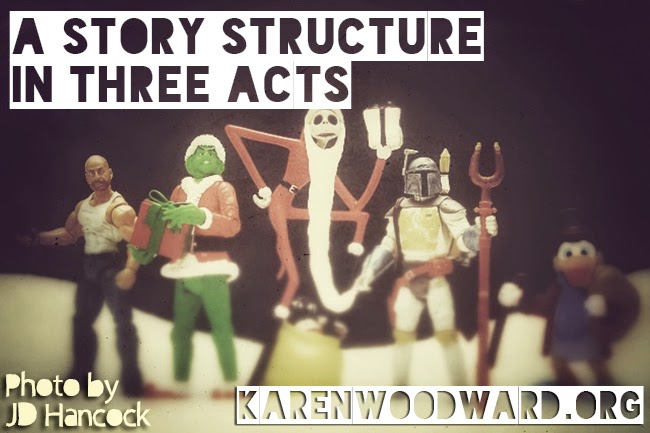The Importance, and Unimportance, of Character Description
I realize that opinions differ about this, but when I first started writing I thought that I needed to describe what the protagonist looked like in great and gory detail and preferably in the first few paragraphs. I thought the reader had to know the protagonist’s hair color, its length, the shape of her face, her height, her taste in clothes, and so on, as soon as possible.
Now, I believe that--while it’s good to let the reader know what your main character looks like before she gets too far into the story--you shouldn’t try to make it the first thing you describe. If you disagree with me let me make my case and then, share your view in the comments. I’d love to talk to my readers about this.
The Character of Characters
I don’t identify with a character because of her long luxuriant hair or cute dimples, I identify with her--or at least become curious about her--because of the kind of person she is (I’ll get more into this in a moment).[1] Yes, a character’s looks may have something to do with this, there are other qualities that are much more important.
I do think it’s important to communicate what the character looks like (long or short hair, what color, and so on) before too long, otherwise the reader will form their own idea what the character looks like and when I tell them differently the reader will likely be grumpy about having to update their already formed image. [2]
Characters are the most important part of any setting
As anyone who has read my blog for any length of time knows, I admire the way Stephen King can draw me into his story world in a few paragraphs. I used to think dark magic had to be involved. Now I realize that King’s magic has to do with showing us the inner workings of his characters, of their contradictory souls.
I want to talk about this but, first, let’s look at the first few paragraphs from one of Stephen King's best books, The Shining (1977).
First Three Paragraphs
"Jack Torrance thought: Officious little [so-and-so].
"Ullman stood five-five, and when he moved, it was with the prissy speed that seems to be the exclusive domain of all small plump men. The part in his hair was exact, and his dark suit was sober but comforting. I am a man you can bring your problems to, that suit said to the paying customer. To the hired help it spoke more curtly: This had better be good, you. There was a red carnation in the lapel, perhaps so that no one on the street would mistake Stuart Ullman for the local undertaker.
"As he listened to Ullman speak, Jack admitted to himself that he probably could not have liked any man on that side of the desk--under the circumstances." (Stephen King, The Shining) [1]
An Analysis
Right away, I noticed three things about these paragraphs. First, King uses them to describe the characters and not the room. We understand the characters and only then do we get to the physical setting. Second, the setting reflects the personality of one of the characters in the scene. (I go into how setting is linked to character development in my post, “dkdkdkd.”) Third, the setting increases conflict between the characters in the scene.
a. Character first, setting second.
The first time I read the above paragraphs I don't think I realized that Jack Torrance was in Ullman’s office or that he was there for a job interview. But that's okay, I was still drawn into the world of the story. So, obviously, that information wasn’t essential, at least not right away. Also, the question, “What, exactly, is happening here?” was important enough to me that I wanted to keep reading.
What is important is that we get to Jack and that Jack--and the situation he is in--makes us want to read on. I didn’t understand why Jack was so angry, why he hated Ullmann so much.
Notice, though, that after reading the first three paragraphs we don’t know the color of each man's hair, we don’t know if the walls are painted or wallpapered, we don’t know what kind of desk Ullman has, and so on.
We do know the important things, though. We DO know that Jack is an angry SOB and that he hates Ullmann. And we get it, right in the first sentence. Jack views Ullman as an individual deserving of contempt. But… Why? After all, in the third paragraph Jack admits to the reader that regardless of what Ullman said or did he wouldn’t have liked him because--if things worked out well--he was going to be Jack’s boss. And, right there, we see not only that Jack is capable of being honest with himself but that he has a problem with authority, and it isn’t a small one!
Let’s drill down into the nitty gritty of what the first three paragraphs tell us. In the very first sentence we are told that the protagonist’s name is Jack Torrence. We also have something of an idea how old Jack is, an age range because of the language used. For example, a child probably wouldn't have thought 'officious' and wouldn’t have the kind of interaction with Ullmann that Jack is having. It seems like something formal, something that a child’s parents would be present at. The word “officious” belies not just an adult's vocabulary but also either an educated person or someone who reads a lot.
Also, a child who thought "officious little [so-and-so]" (depending on their temperament) might well have also said it. But Jack didn't. He's angry but controlling it.
And, finally, that first sentence also gives us the point of view: third person, subjective.
"Ullman stood five-five, and when he moved, it was with the prissy speed that seems to be the exclusive domain of all small plump men."
From the second sentence (I'm only going to talk about the first two) we learn that Ullman is short and fat and that Jack thought he was prissy. It's interesting (interesting to me at least!) that while we're told how tall Ullman is, how he moves, that he's plump--quite a number of physical details--we aren't given any of this information about Jack Torrence, the protagonist.
But that makes perfect sense, doesn't it? After all, we're seeing all this from Jack's perspective, from the narrator's point-of-view which is firmly ensconced in Jack's mind. As a result everything Jack sees, everything the narrator tells us about the world, also tells us about Jack. And Jack--this character--couldn't care less about his hair color or how it's cut and styled. One feels Jack would label that as 'prissy,' something Ullman would be concerned about.
It isn't until a few paragraphs later that we learn what we are watching is a job interview and that the characters are in Ullman's office:
"He slipped Jack’s application back into the file. The file went into a drawer. The desk top was now completely bare except for a blotter, a telephone, a Tensor lamp, and an in/out basket. Both sides of the in/out were empty, too.
"Ullman stood up and went to the file cabinet in the corner. 'Step around the desk, if you will, Mr. Torrance. We’ll look at the floor plans.' He brought back five large sheets and set them down on the glossy walnut plain of the desk. Jack stood by his shoulder, very much aware of the scent of Ullman’s cologne. All my men wear English Leather or they wear nothing at all came into his mind for no reason at all, and he had to clamp his tongue between his teeth to keep in a bray of laughter. Beyond the wall, faintly, came the sounds of the Overlook Hotel's kitchen, gearing down from lunch."
The second thing that jumps out at me is that ...
b. Intimate settings reflect the personality of the characters.
I went into this in great detail in my previous post, so I won’t belabour the point here.
When Stephen King--or, rather, the narrator--describes Ullman's desk (see the passage, above), he is describing Ullman. He is describing items--the desk, the chair, the in/out basket--that Ullman has impressed his personality upon. These setting details, therefore, are a reflection of Ullman's character, of who he is and how he wants the world to be.
(See: How to Write a Genre Story: Setting: How to Show Not Tell)
It is only in the last paragraph that we are given the information that these characters are at the Overlook Hotel and that it's just after lunch. By this time we know that Jack was enduring a job interview ("He slipped Jack's application back into the file"). But I am only interested in these things because, now, I am interested in these men--particularly Jack--and the peculiar tension between them.
c. Use elements of the setting to introduce conflict.
As I’ve mentioned, Stephen King uses the setting--which largely consists of the two men, at least at the beginning--to inject a mammoth amount of conflict right from the first line: "Officious little [so-and-so]." But, as I mentioned above, Jack's thoughts tell us more about him than about Mr. Ullman:
"Jack admitted to himself that he probably could not have liked any man on that side of the desk--under the circumstances."
What are the circumstances? King doesn't answer this question right away. He lets the information unfurl, naturally, like we're perched on Jack Torrance's shoulder, riding along with him on this most disagreeable of days, a voyeur learning about Jack and his world. But notice what he’s done, he has gotten us to ask a question and now he’s making us wait for an answer. (For more about Lee Child and how to create suspense by asking a question, see these articles: Writing a Genre Story: How to Create Suspense, Parts of Story: The Preconditions For Suspense, Lee Child On How To Write A Book Your Readers Can't Put Down.)
After those three paragraphs I was hooked.
Describe only those aspects of the setting that are relevant to the scene's purpose.
Keep description focused.
Each scene has a purpose: the protagonist wants to achieve some goal and they probably won't. At the same time, each scene must advance the overall plot and move the story closer to the final, inevitable, showdown between hero and villain.
Here are elements each scene needs to communicate to the reader:
- Who is the main character, the FOCAL CHARACTER, in the scene?
Jack
- What is the focal character's GOAL?
To get through the interview without insulting Ullman and in possession of a job.
- What must the focal character accomplish to ATTAIN that goal?
Control his temper.
- What OPPOSING FORCE prevents the focal character from attaining their goal?
Jack’s own temper. And Ullman.
- How does the focal character MEET THIS OPPOSITION?
Jack contains his anger.
Once you answer these questions you'll know what information needs to be communicated in the scene. I’m not saying that no more than this information can be communicated, but unless this information is communicated the scene won’t make sense.
Make sure that each setting has been described in enough detail, and with enough emotion, to ground each turning point. Part of this is making it clear what has led up to these changes.
If a detail of setting doesn't contribute to answering any of these questions then it might not need to be included in the scene. Perhaps it would be better placed in another scene. Or another novel.
I hope some of what I've written, above, is of help in deciding how much description is enough. In the final analysis I agree with Stephen King: It's all on the table. Use whatever you want, especially in the first draft. Experiment, try new things! After you've set your manuscript aside for awhile and come back to it, and read it with fresh eyes, then it will be easier to see which parts work and which don't, as well as where you've described too much or too little.
That’s it for today! I hope you’ve found something useful in this. If so, leave a comment. If not, and you’d like to tell me about it, please leave a comment! Whatever you do, good writing. Cheers.
Notes:
1. Notice that these paragraphs were written in third person and yet King seems to have achieved all the intimacy of first person. I've written a bit about how Stephen King might have achieved this--one of the techniques I think he makes use of--in this post: Free Indirect Discourse: How To Create A Window Into A Character's Soul.
2. The idea is that what interests me as a reader isn’t the length of a character’s hair. Take Jim Butcher’s character Harry Dresden, the only professional investigating wizard as an example. He has a proper wizard’s laboratory in his lodgings, it’s in a hidden basement no one knows about. Harry is unrepentantly snarky--a true curmudgeon--and yet can’t help himself when a beautiful woman asks him for help. Also, he collaborates with a spirit named Bob who lives in a human skull. After the first page of Butcher’s first Dresden book, Storm Front, I knew I wanted to know more about Harry. From reading what I’ve just written about him, do you have something of an idea who Harry Dresden is and whether you’d like to read more about him? If so, note that I haven’t said anything about what the character looks like.
Other posts in this extended series (I'm blogging a book):
How to Write a Genre Story: The Index









